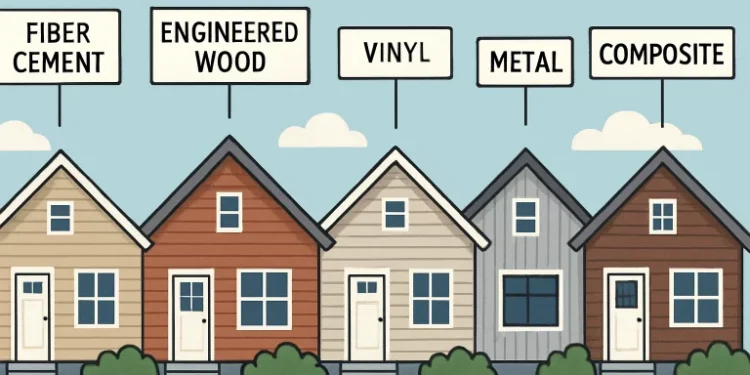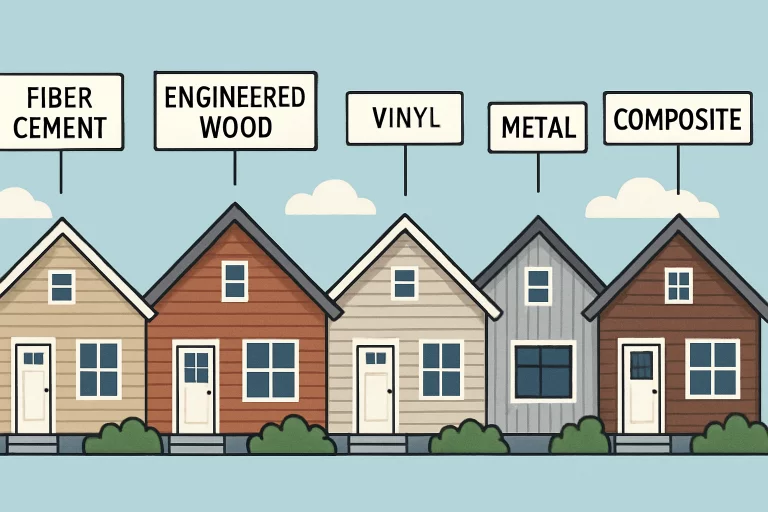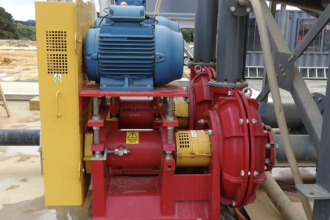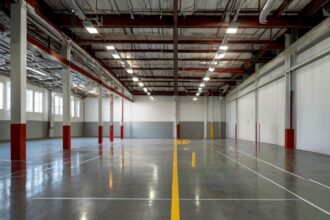Top Siding Materials for Modern Homes

Table of Contents
Introduction
When it comes to updating or building a modern home, choosing the right siding is a decision that goes far beyond simply picking an attractive exterior. The perfect siding enhances a home’s visual appeal and plays a pivotal role in defending the structure against the elements, boosting both energy efficiency and long-term property value. As the market continues to evolve, homeowners are presented with an impressive range of siding materials, each engineered to withstand specific environmental challenges while catering to diverse architectural preferences. Choosing among these—such as the ever-popular fiber cement and versatile vinyl siding—not only allows for personal expression but also impacts ongoing maintenance demands, utility bills, and even resale potential. For an in-depth, brand-by-brand look at leading choices, consider exploring James Hardie siding vs vinyl for detailed guidance.
Carefully evaluating the available siding materials is essential, given that this investment sets the backdrop for your home while profoundly shaping its durability and upkeep requirements. From the classic elegance of natural wood to the sleek, futuristic appearance of metal and the advanced performance features of composites, every material offers distinct advantages and trade-offs. As technology advances, innovative finishes and eco-conscious options have also emerged, making the decision-making process both exciting and complex. Understanding these core benefits and possible limitations enables homeowners to select a siding option that fits their climate, lifestyle, and future plans.
Fiber Cement Siding
Fiber cement siding stands out as a premium exterior cladding for those seeking the elegance of traditional wood and masonry with the strength of modern engineering. Manufactured by combining cement, sand, and cellulose fibers, this remarkable material is meticulously designed to resist threats like rot, termites, and fire. Its robust nature makes it highly reliable in regions experiencing harsh winters, summer heat, or continuous moisture, ensuring homeowners do not have to worry about swelling, warping, or mold. With a long lifespan that can exceed 30 years with proper installation and occasional upkeep, fiber cement is renowned for its color retention and resistance to fading. Customization is another significant advantage since it comes in an expansive range of textures, finishes, and factory-applied hues to suit any creative vision perfectly. For homeowners eager to explore the latest exterior innovations, check out recent cladding ideas and trends that showcase modern siding possibilities.
Pros
- Highly durable and inherently fire-resistant, ideal for safety and longevity
- Available in a virtually limitless selection of textures and colors, from rustic to ultra-modern
- Low-maintenance exterior, with infrequent repainting thanks to resistant finishes
Cons
- Heavier weight requires expert installation, potentially increasing labor costs
- The initial investment is higher than alternatives like vinyl or standard wood.
- While low-maintenance, it may still require occasional painting after extended weather exposure.
Engineered Wood Siding
Engineered wood siding is crafted to blend the alluring, organic appeal of traditional timber with 21st-century science for a noticeably more resilient product. Manufacturers create panels that resist common wood pitfalls such as rot, insects, and water absorption by compressing wood fibers with strong adhesives and protective resins. Its ability to convincingly mimic real wood grain sets engineered wood apart while standing up to tough weather far better than natural wood. Available in various profiles and finishes, engineered wood works beautifully with both timeless and cutting-edge architectural plans, from classic American lap siding to bold panels. Maintenance is refreshingly simple; thanks to built-in protection against moisture and decay, repainting and resealing are often delayed for years compared to solid wood siding. For a closer look at the environmental advances and style options, investigate this sustainability guide to cladding.

Pros
- Offers an authentic wood appearance with far greater durability and fewer vulnerabilities
- Wide selection of vivid finishes and realistic grain patterns to suit any façade
- More sustainable production and lower environmental impact compared to traditional lumber use
Cons
- Periodic repainting or resealing is still recommended to maintain a pristine look.
- If not installed and sealed correctly, it can be susceptible to long-term moisture exposure
- Typically priced higher than standard vinyl, though less than premium fiber cement
Vinyl Siding
Vinyl siding remains a favorite for homeowners and builders seeking a cost-conscious, no-hassle way to refresh a home’s exterior. This lightweight PVC cladding is celebrated for its extensive palette of colors, styles, and profiles—including classic horizontal lap, vertical boards, scalloped, and even shake-imitating panels. Technological improvements now enable vinyl to mimic the look and texture of naturally stained wood closely, and insulated vinyl options are increasingly common to add energy-saving benefits. The material is impervious to rot, mold, and insects, dramatically cutting cleaning and repair expenses. Installation is also quick and straightforward, increasing its appeal for new construction and remodeling projects alike. While vinyl can be more vulnerable to impact damage and sunlight fading than robust claddings, its affordability, minimal upkeep, and variety make it an enduringly popular choice. To discover even more about vinyl siding innovations, browse through this guide.
Pros
- Accessible and budget-friendly for nearly any home improvement project
- Exceptionally low-maintenance—no painting, minimal cleaning
- A diverse range of color and texture options to achieve almost any exterior look
Cons
- Can fade or become brittle from prolonged sun exposure, especially on older or lower-end products
- Lower impact resistance than fiber cement or metal, potentially leading to cracks
- Manufactured from non-renewable materials, making it less eco-friendly
Metal Siding
Metal siding, predominantly crafted from steel or aluminum, has cemented its place in contemporary home design with its unmistakable urban edge and nearly unrivaled longevity. Aluminum is prized for its natural rust resistance and feather-light installation, particularly handy in coastal areas where salt exposure is a concern. Meanwhile, steel siding’s superior strength makes it excellent for withstanding hail, strong winds, and other severe weather. Both materials fend off the fire, wood-destroying insects, and mildew, meaning long intervals between maintenance chores and fewer potential repair bills. Metal siding can be finished with various colors or special coatings for additional protection and flair. It becomes a cornerstone of many energy-efficient constructions when paired with advanced insulation. The added upfront cost is balanced by a lifespan surpassing four to five decades. For modern inspiration, consider reviewing today’s trending metal cladding designs.
Pros
- Visually distinctive, ideal for modern minimalist and industrial aesthetics
- Exceptionally durable in extreme climates, with minimal maintenance required
- Outstanding fire, insect, and weather resistance ensure a long-lasting exterior
Cons
- Greater material and installation costs, especially for custom finishes or profiles
- Susceptible to denting from heavy impacts such as hail or stray objects
- Style choices are more limited relative to wood or vinyl-based products
Composite Siding
Composite siding represents the evolution of exterior home technology, expertly blending recycled wood fibers, plastics, or synthetic resins to produce a product engineered for peak performance. This advanced material is highly resistant to splitting, warping, and fading, making it an attractive option in climates with dramatic seasonal shifts or persistent humidity. Manufacturers often include built-in insulation for substantial energy efficiency gains, and the surface selections range from rustic and textured to crisp and contemporary. Installation is generally fast and forgiving, as panels are designed to lock into place and require minimal surface preparation. Many composite products are environmentally conscious, utilizing recycled or sustainable materials. Longevity is assured through robust warranties, often upwards of 30 years, meaning peace of mind for years to come. Learn more about both the environmental innovation and visual possibilities via this composite siding sustainability article.
Pros
- Offers premier resistance to weather, pests, and physical impact
- The extensive palette of finishes for precise personalization
- Built-in insulation bolsters both efficiency and comfort
Cons
- Priced above entry-level vinyl, though typically with greater long-term value
- Specific designs or hues may not be readily available in all regions
- Post-manufacturing customization of color can be challenging
Choosing the right siding is a transformative step for any modern home, shaping everything from energy usage and climate resilience to your property’s visual character and future marketability. With powerful options like fiber cement, engineered wood, vinyl, metal, and composite siding available, every homeowner can find a solution that aligns with their priorities, whether minimal upkeep, contemporary style, or the ultimate in weather protection. If you compare top materials and want clear, actionable advice, resources provide valuable reviews and side-by-side comparisons. Ultimately, your siding choice should reflect your long-term goals, climate realities, and aesthetic ambitions, ensuring that your home remains both beautiful and protected for decades to come.






